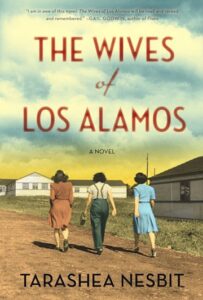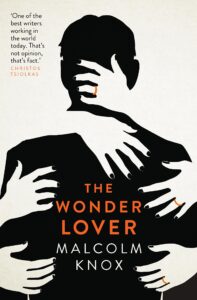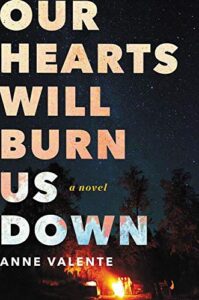I wish I had a better reason, but the story of how I came to be interested in stories that feature collective narration is a bit petty, really. I was speaking to a good female friend who had recently started dating a man who, as it happens, I had also dated many years before (it adds a certain frisson to say that as a bisexual woman I don’t tend to fall for straight women, but it just so happened that I had an active crush on this straight female friend, because, hey—sometimes life just isn’t complicated enough). I talked to my female friend about the unusually warm weather. She said, declaratively, ‘We’ll go to the pool this weekend, it’ll be beautiful’. ‘Great!’ I said. ‘What time should I meet you there?’ ‘Um,’ she paused for a moment. ‘I didn’t actually mean you’.
I had forgotten how fast that slide into a couple ‘we’ can become. And I was also suddenly painfully aware of the way ‘we’ can hide all sorts of things in its depths.
The first-person plural is a point of view that can be recognized by the use of ‘we’, ‘ours’ and ‘us’. For obvious reasons, the collective voice lends itself to collective accounts. Importantly, this first-person plural does not specify much about who is speaking—‘we’ can be two people or it can be a hundred. It can include the person being spoken to, but it can also exclude them (something I was all too painfully aware of after the incident I describe above!). The classic Donald Barthelme short story, titled ‘Some of Us Had Been Threatening Our Friend Colby’ is a great example, the story made all the more menacing by the use of ‘we’ or ‘us’ and ‘our’. One of my favorite lines from the story reads as follows: ‘And now he’d gone too far, so we decided to hang him.’ I have always been fascinated by unusual points of view, so I really shouldn’t give too much credit to friends and exes and crushes who date each other (and in fairness, I was in a committed relationship at the time). What continues to draw me to collective narration in particular is the compelling fact that anytime anyone speaks using a ‘we’ they are speaking with others (or at least pretending to speak for others). Catriona Menzies-Pike has called it ‘[t]he group hug of the first person plural’. If you’ve ever been pulled into a group hug you weren’t that into, then you understand some of the tensions at play.
I use collective narration in my first book, Dirt Creek (August 2022, Flatiron Books), which tells the story of a girl named Esther Bianchi who goes missing from her small country town in rural Australia. In my book, we hear from the children of the town, who speak in a kind of Greek chorus, commenting on the action, breaking up narration by other characters. I was drawn to the first-person plural because I thought what happens in my fictional town of Durton is just the kind of experience that merited a coming together, a squirming group hug of country kids who want to share what they know about the day Esther disappears.
Below, I’ve picked out some of my favorite examples of collective narration. It’s not an exhaustive list, and it’s not really a list of ‘crime books’ in a traditional sense—though interestingly many of the books have some kind of crime or transgression at their heart. What this list hopefully does is highlight some of the interesting things that can happen when characters speak together:

Jon McGregor, Even the Dogs
In the opening of Jon McGregor’s Even the Dogs (2010), the reader watches with a collective as police pick through the apartment of a man who has just died. ‘They don’t see us, as we crowd and push around them. Of course they don’t.’ (p. 4) It takes time, but the reader slowly learns more about this group of addicts that sometimes float above the action, and sometimes take part in it. As this spare and poetic novel unfolds, we’re able to piece together the circumstances that have brought this odd group together and sit with the reality of what it is to live on the edge of society.

TaraShea Nesbitt, The Wives of Los Alamos
In TaraShea Nesbitt’s excellent The Wives of Los Alamos (2014), it’s the wives of the scientists who’ve been employed to work on The Manhattan Project who narrate, together. They speak of their lives in the New Mexico desert (‘Some of us did not burn easily but many of us did’ (p. 25). As you read, you realize that the ‘we’ is allowed to stretch until it almost breaks, and it becomes possible to pick out individuals in the crowd of women. One thing the wives all share is that they don’t know what their husbands are working on until bombs fall on Japan.

Malcolm Knox, The Wonder Lover
Malcolm Knox’s The Wonder Lover (2016) is simultaneously narrated by all six of John Wonder’s children (who, to complicate matters, are all named Adam or Evie) as they try to understand why their father has started three different families on three different continents (‘You have left your mark on us, in us, Father.’ p. 343). This is a story of the way our parents define us, and how we must ultimately find a way to define ourselves. It also speaks to the fact that the truly important things can’t be measured with numbers.

Brit Bennett, The Mothers
In Brit Bennett’s The Mothers (2016), the matriarchs of an African American church community keep a watchful eye out. Their accounts punctuate a narrative about the secrets we keep, how they make and unmake us. I came upon this book when I was despairing that I might never get my own chorus to work, and was heartened by the way Bennett pulls it off. This is a beautiful, moving account of the ways our lives are intertwined. Like many of the narrators in the novels discussed here, the collective voice feels almost omniscient, but is grounded in the embodied experiences of people in a tight-knit community.

Anne Valente, Our Hearts Will Burn Us Down
Anne Valente’s haunting Our Hearts Will Burn Us Down (2016) features a group of teenagers who speak using ‘we’, after a school shooting: ‘When we first heard the noise we imagined bang snaps, the white-paper firecrackers we once threw to the pavement every Fourth of July’ (p.1). When families of classmates who died in tragedy start dying in housefires, the narrators wonder: is it targeted violence, or is something more mysterious happening? The ending of this beautiful book will be one you simply have to discuss with friends.
***


















